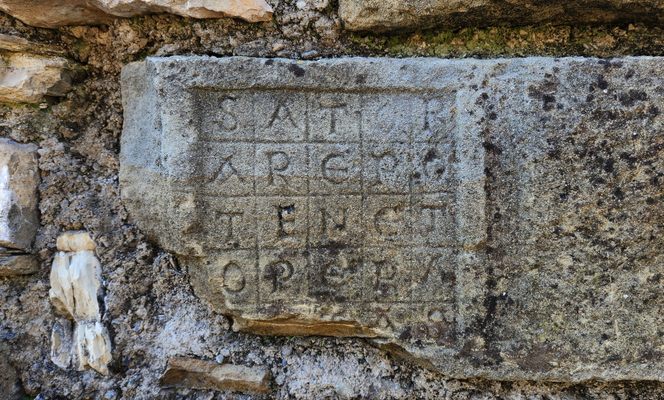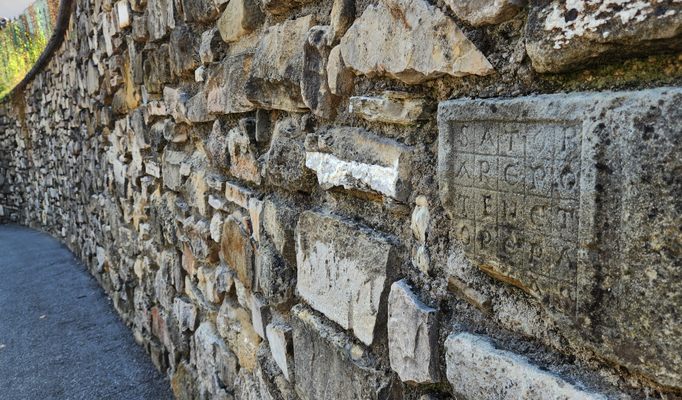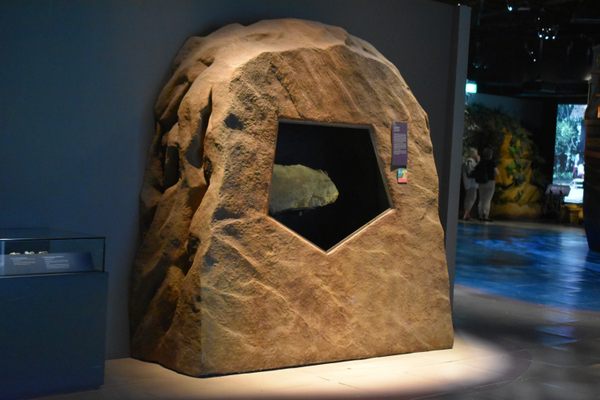About
Along the wall enclosing the remains of a castle is an unusual stone. It is square-shaped, and it bears a grid with the following words readable both horizontally and vertically: SATOR, AREPO, TENET, OPERA, and ROTAS. These words can be read backwards, so that SATOR is ROTAS written backwards, AREPO is OPERA written backwards, and TENET, being at the middle of the five-letter square, is a palindrome itself. Another feature of this stone is that the initials of these five words spell out SATOR, the second letters of these words spell out AREPO, and so on, which means that the grid is also acrostic. Because of its palindromic and acrostic nature, this stone was at times thought to have magical properties, and as such, it is mentioned in books on medieval cures.
Sator squares are actually common across Europe, the Middle East, and North Africa. The oldest Sator Square was found in Pompeii. It dates back to the first century B.C., and it begins with the word ROTAS instead of SATOR, but its structure is identical to that of all other Sator squares. The origins and meaning of the square are a mystery. In this regard, conflicting theories emphasize the religious or political origins of the Sator Square, but some credible hypotheses suggest that perhaps it was nothing more than a word puzzle.
The meaning of the words in the grid does not help. In Latin, sator means sower, farmer, or progenitor—which could be linked to the divine. But arepo is not of Latin origins; it may be linked to a Gaelic word for plow, but it may also be a proper name conveniently placed to complete the palindrome. Tenet is more straightforward, and it is Latin for “(he) holds.” Opera can be translated as labor, care, or attention. Finally, the word rotas means wheels. Possible sentences can be constructed with these words, such as “The farmer Arepo holds the wheels with care”, and many similar variations. More colorful interpretations include the use of anagrams and results in formulas for exorcism or pleas to Satan.
A running theme of the Sator Stones is that they contain one or more inconsistencies in the way letters are carved. True to this tradition, in the Sator Stone found in Brusaporto, all but one E are rounded. The exception is the first E in the word TENET, which is, in fact, square. This peculiarity of Sator squares simply adds to the mystery surrounding them.
When it comes to this particular Sator Square in Brusaporto, the questions multiply. No other stone on this long stone wall is carved. Furthermore, this castle was of little importance—more of a military outpost than a residence for aristocrats—and with no obvious links to medicines or incantations. Why place a Sator Stone here? And why in this nondescript section of the wall? As to the age of this stone, it is probably from the Middle Ages, but this is as accurate as we can be.
Related Tags
Flavors of Italy: Roman Carbonara, Florentine Steak & Venetian Cocktails
Savor local cuisine across Rome, Florence & Venice.
Book NowPublished
October 31, 2023

























